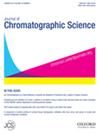Development and Validation of Fast and Sensitive RP-HPLC Stability-Indicating Method for Quantification of Piroxicam in Bulk Drug
IF 1.5
4区 化学
Q4 BIOCHEMICAL RESEARCH METHODS
引用次数: 0
Abstract
A simple, rapid, sensitive, and cost-effective green solvent-assisted reverse-phase high-performance liquid chromatographic technique, coupled with a photodiode array detector, was developed and validated for the estimation of piroxicam (PRXM). The chromatographic separation was achieved by using a C-18 (250 × 4.6) mm, 5-μm stationary phase and a mobile phase consisting of methanol and 0.1% ortho-phosphoric acid in water in a ratio of (80:20) v/v at a flow rate of 1 ml/min. The detection was carried out at a wavelength of 254 nm with a constant injection volume of 10 μL throughout the analysis. The calibration curve was observed to be linear over the optimum concentration range of 50–300 μg mL−1, with an R2 value of 0.9995. The developed method was validated as per the International Council for Harmonisation (ICH) Q2 (R1) guideline. Various parameters like selectivity/specificity, accuracy/recovery, linearity, precision, detection limit, quantitation limit, robustness and stability of analyte in solution were performed for the method validation. The PRXM was evaluated under stressed conditions, including acidic, basic, oxidative, thermal and photolytic, as per ICH Q1 (R2) guidelines. Significant degradation was observed in acidic and basic degradation conditions. Conversely, the drug substance showed stability when exposed to oxidative, photolytic and thermal degradation conditions.快速灵敏的 RP-HPLC 稳定性指示法的开发与验证,用于定量散装药物中的吡罗昔康
开发并验证了一种简单、快速、灵敏且经济高效的绿色溶剂辅助反相高效液相色谱技术,该技术与光电二极管阵列检测器相结合,用于吡罗昔康(PRXM)的测定。色谱分离采用 C-18 (250 × 4.6) mm、5-μm 固定相,流动相为甲醇和 0.1% 原磷酸水溶液,流速为 1 ml/min,二者的体积比为 (80:20) v/v。检测波长为 254 nm,整个分析过程中的进样量保持为 10 μL。在 50-300 μg mL-1 的最佳浓度范围内,校准曲线呈线性关系,R2 值为 0.9995。所开发的方法按照国际协调理事会(ICH)Q2 (R1)指南进行了验证。对方法的选择性/特异性、准确性/回收率、线性、精密度、检测限、定量限、稳健性和溶液中分析物的稳定性等参数进行了验证。根据 ICH Q1 (R2) 指南,在酸性、碱性、氧化、热和光解等压力条件下对 PRXM 进行了评估。在酸性和碱性降解条件下观察到了明显的降解。相反,药物在氧化、光解和热降解条件下表现出稳定性。
本文章由计算机程序翻译,如有差异,请以英文原文为准。
求助全文
约1分钟内获得全文
求助全文
来源期刊
CiteScore
2.90
自引率
7.70%
发文量
94
审稿时长
5.6 months
期刊介绍:
The Journal of Chromatographic Science is devoted to the dissemination of information concerning all methods of chromatographic analysis. The standard manuscript is a description of recent original research that covers any or all phases of a specific separation problem, principle, or method. Manuscripts which have a high degree of novelty and fundamental significance to the field of separation science are particularly encouraged. It is expected the authors will clearly state in the Introduction how their method compares in some markedly new and improved way to previous published related methods. Analytical performance characteristics of new methods including sensitivity, tested limits of detection or quantification, accuracy, precision, and specificity should be provided. Manuscripts which describe a straightforward extension of a known analytical method or an application to a previously analyzed and/or uncomplicated sample matrix will not normally be reviewed favorably. Manuscripts in which mass spectrometry is the dominant analytical method and chromatography is of marked secondary importance may be declined.

 求助内容:
求助内容: 应助结果提醒方式:
应助结果提醒方式:


